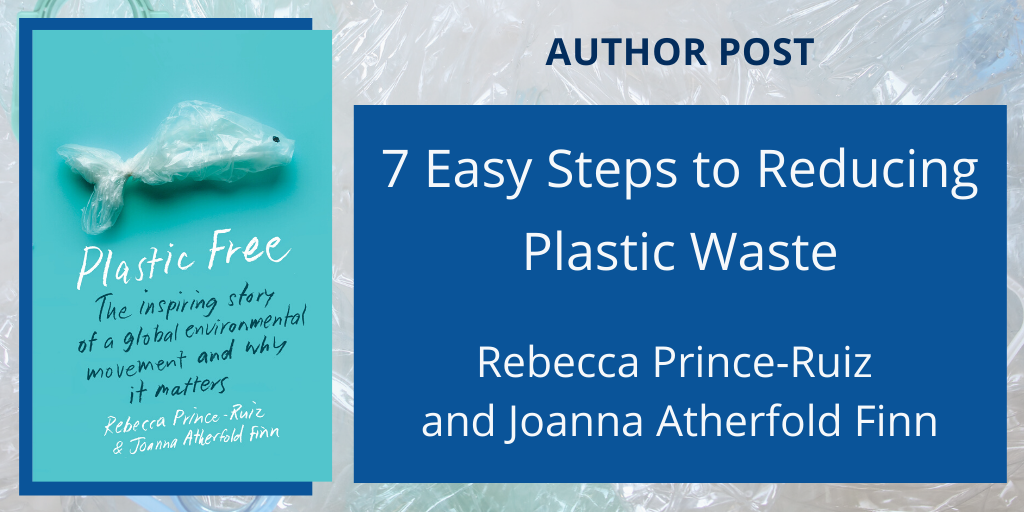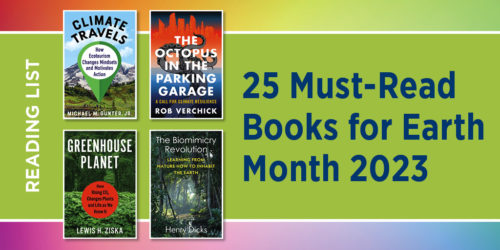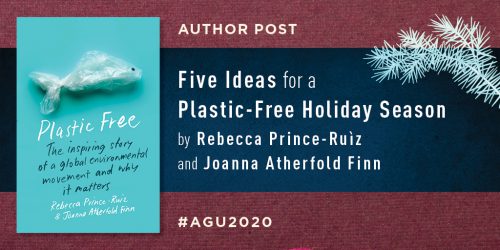7 Easy Steps to Reducing Plastic Waste
By Rebecca Prince-Ruiz and Joanna Atherfold Finn

“Plastic Free shows how one person can ripple out and cause good around the globe. Never has there been a more important time to share hope and action, and combine them for our Mother Earth.”
~Melissa Joan Hart, actress
In July 2011, Rebecca Prince-Ruiz challenged herself to go plastic free for the whole month. From just a small group of people in the city of Perth, the Plastic Free July movement has grown into a 250-million strong community across 177 countries, empowering people to reduce single-use plastic consumption and strive for a cleaner future. This month we encourage our readers to take the challenge. To help you get started, Rebecca Prince-Ruiz and Joanna Atherfold Finn (the authors of Plastic Free: The Inspiring Story of a Global Environmental Movement and Why It Matters) have shared some easy steps you can follow to reduce plastic waste in your daily life.
• • • • • •
Each year, millions of people take part in the Plastic Free July challenge, and by doing so, every one of these people makes a difference by helping reduce the amount of single-use plastic entering our environment. At Plastic Free July, we’ve found that the most important way you can ensure your challenge is a success is to give it a try and to choose your challenge. There are no hard and fast rules! But if you’re not sure where to begin, here are some suggestions to help you get started.
Step 1: Choose One Thing
You can start off small by simply tackling just one single-use plastic item for the month. The best way to work out which item that is would be to have a bit of a rummage through your kitchen bin (or your fridge and kitchen cupboards) and see what single-use plastic items you commonly purchase. These may be plastic bread bags, plastic grocery bags, plastic wrap, or plastic produce trays. This mini-audit will help you to identify the types of plastic you use on a regular basis. We’ve found that when people first taking on the challenge focus on just one or even two items, they’re much more likely to succeed. Once you have chosen your item, plan ahead for any alternative items or actions you can take during Plastic Free July. For example, if you’ve chosen plastic bread bags, find out whether your supermarket offers a service to bag up your own bread, or whether there is a local bakery that already uses paper packaging or will accommodate you with your BYO bag from home.
Step 2: Bring Your Own Water Bottle
Toting your own water bottle and filling it at home means you can easily avoid single-use water bottles or plastic water-cooler cups. With over a million plastic beverage bottles purchased globally every minute, it makes sense to join together to reduce this astounding statistic, especially if you live in a country with access to safe drinking water. Of course, you should always be sure to incorporate hygienic practices, even when not in a pandemic. Don’t let the mouth of your bottle touch the water tap or spigot, don’t share your bottle with others, and wash out the inside of your reusable water bottle at the end of each day with hot water and detergent/soap (or use a dishwasher if your bottle is dishwasher-safe).
Step 3: Skip the Straw
It’s common for drinks offered at restaurants and cafés to be served with straws. This quickly adds up to a massive plastic waste issue. In 2019, plastic straws and stirrers ranked third on the list of most-collected items worldwide during the International Coastal Cleanup, an initiative of the Ocean Conservancy in the United States. Straws are also one of the top four items (along with plastic bottles, takeaway cups, and single-use plastic bags) that many tackle when starting their Plastic Free journeys. There are several alternatives to plastic straws available on the market, such as reusable straws made from bamboo or stainless steel. You can also decline a straw when you order your drinks. Of course, plastic straws are vital for people with certain mobility issues or disabilities, but if you can skip the straw, please do.
Step 4: Use a Bar of Soap
You can find quite a few items to go plastic free with in the bathroom, and one easy thing you can do is to make the switch from liquid soap to bar soap. Liquid soap is a relatively recent phenomenon, but a trusty cake of soap is just as effective and involves no plastic packaging. Some people may be put off by the “messy” nature of bar soap, but this can be quickly remedied by also using a soap dish. You can even make your own soap dish by using the lid of a recycled container with some recycled rubber bands stretched across it so the soap can drain. Or try a shell, Mother Nature’s perfect soap vessel! Some shells even have built-in drainage holes.
Step 5: Eliminate Single-Use Plastic Produce Bags
If this is your first Plastic Free July, you may want to eliminate single-use plastic produce bags. These bags are a major source of single-use plastic, and it is often more expensive to purchase your fruit and vegetables in this way. A plastic bag containing pre-washed chopped lettuce, for example, usually costs much more than a plain head of lettuce. Many fruits and vegetables already have their own perfect packaging—their skins and rinds. Bananas and oranges are obvious examples, but even these are sometimes “conveniently” packed into plastic bags or plastic netting in supermarkets. We have a number of different solutions in order to eliminate this source of plastic waste. One is to buy from local produce stalls or farmers’ markets, where the produce sold usually has little to no packaging. You can also find alternatives to fruit and vegetables that are often packaged, such as swapping a punnet of strawberries for another fruit variety. Our Plastic Free July team loves to take along our own produce bags, which are washable, space-saving, and great for carrying individual fruit or vegetable portions. Of course, the COVID-19 pandemic has made us all even more conscious of our health, so be sure to follow recommendations that you wash your hands with soap and water before and after handling fruit and vegetables, as well as washing your fruit and vegetables in fresh water before eating. Though we would recommend these practices regardless of the coronavirus—it’s just good hygiene.
Step 6: Bring Your Own Reusable Bags or Boxes
One of the best ways to avoid single-use plastic is to take and use your own bags or boxes when shopping. It doesn’t matter what you use, and most of us have a variety of bags to choose from at home. Being prepared is the key. You can keep your (washed) bags in your car, near the front door, or at some another convenient spot. Just be sure that they are always easy to have on hand. If you forget your bag or are unable to use them and only have a few items, we suggest you juggle your purchases or “go naked” by simply carrying them in your hands or putting groceries straight back into the trolley and unloading to the car.
Step 7: Make Homemade Snacks
Snack foods are wonderfully convenient! Unfortunately, they are frequently packaged in plastic (and sometimes even in several layers of it). We think trading a bit of convenience to protect ourselves and the environment is worth it. One thing we’ve noticed during the pandemic is that a lot of people have taken to home baking. Rather than buying pre-packaged cookies, our team members have been whipping up batches of home-baked banana bread and oat cookies. Homemade dips are another quick and easy alternative. A simple yet tasty guacamole (avocado, onion, lime juice, chopped tomato, and salt) can take just minutes to prepare. Instead of crackers, you can serve with carrot or celery sticks, all healthy and plastic-free alternatives. Many participants also report feeling healthier after making these switches.
One Real Challenge
For our first ever Plastic Free July, we created a “dilemma bag” that contained the pieces of plastic we didn’t manage to avoid. This wasn’t done to feel bad about ourselves. We should acknowledge that plastic is a useful material in certain situations and we should treat with the respect it deserves. That’s why throwing it out after a few minutes of use when it is made to last forever is such poor resource management. Again, we will all differ in our approaches to this challenge. It could be the plastic containing your prescribed medication. During the pandemic, it could be the plastic components of your face mask. Under no circumstances should you avoid plastic when it is important to your health and well-being. We definitely want people to stay both well and safe.
Do what you can, with what you have, and enjoy the challenge. Good luck!








1 Response